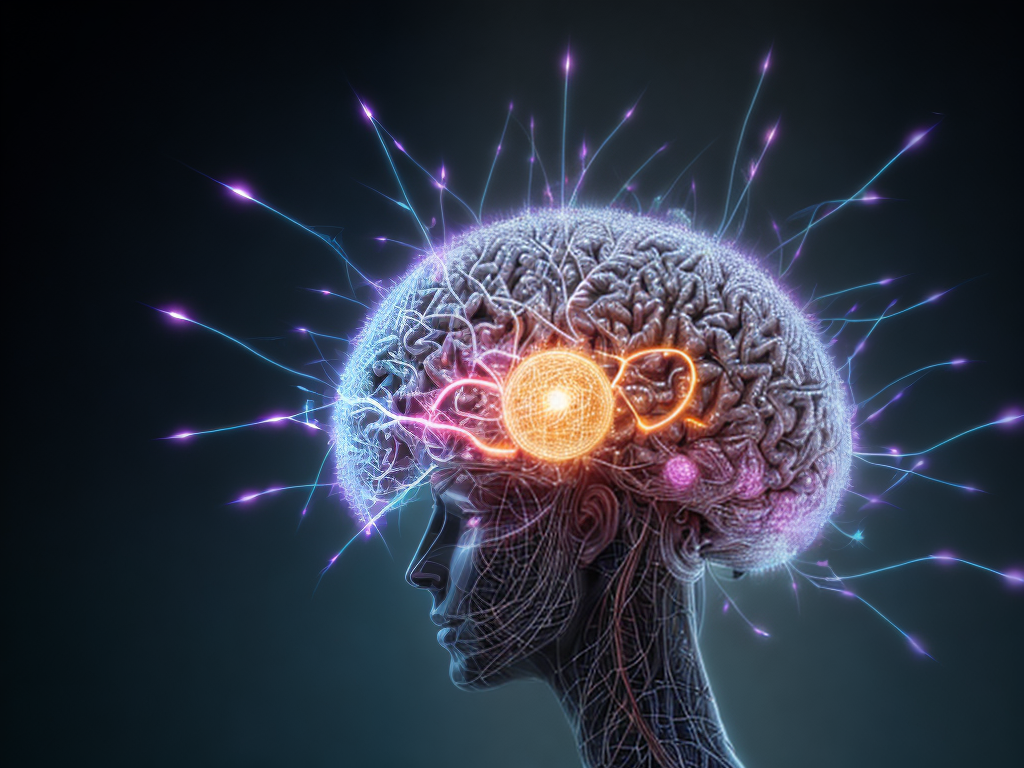
As a technology enthusiast, I am fascinated by the potential of neuromorphic computing. By emulating the intricate workings of the human brain, this cutting-edge approach promises to revolutionize sensor processing. Imagine the power of machines that can perceive the world with the same complexity and efficiency as we do. In this article, we will explore the concept of neuromorphic computing, its benefits in sensor processing, and its potential applications in autonomous vehicles and advanced robotics. Join me on this journey into the future of computing.
The Basics of Neuromorphic Computing
As I delve into the topic of ‘The Basics of Neuromorphic Computing’, it is important to understand how this field is revolutionizing sensor processing by emulating the brain. Neuromorphic architecture, inspired by the structure and functionality of the human brain, serves as the foundation for this innovative approach. At the core of this architecture are spiking neurons, which mimic the behavior of biological neurons by firing action potentials in response to input signals.
These spiking neurons enable computation to be performed directly in the analog domain, making neuromorphic computing highly efficient and power-saving. By harnessing the parallelism and adaptability of the brain, neuromorphic computing systems can process sensor data in real time, enabling applications such as image recognition, natural language processing, and autonomous vehicles to perform with unparalleled speed and accuracy.
The development and refinement of neuromorphic computing hold great promise for advancing the field of sensor processing and unlocking new possibilities in artificial intelligence.
Neural Networks and Synapses in Neuromorphic Computing
When it comes to neural networks in neuromorphic computing, understanding their functioning is crucial. Neural networks are composed of interconnected nodes, or artificial neurons, that process and transmit information. These networks can learn and adapt through synaptic plasticity mechanisms, which allow for the strengthening or weakening of connections between neurons. This plasticity, combined with the parallel and distributed nature of neural networks, enables efficient information processing and complex computations in neuromorphic systems.
Neural Network Functioning
I’ve discovered that neural networks in neuromorphic computing systems can efficiently process sensor data by emulating the brain’s synapses. Neural network architecture plays a crucial role in this process, as it determines the structure and connectivity of the network. Learning algorithms are used to train the neural network, allowing it to recognize patterns and make predictions based on the sensor data it receives. These algorithms use mathematical techniques to adjust the synaptic weights in the network, strengthening or weakening connections between neurons.
This allows the network to adapt and improve its performance over time. By emulating the brain’s synapses, neuromorphic computing systems can achieve high levels of parallelism and energy efficiency, making them ideal for processing large amounts of sensor data in real-time applications.
Synaptic Plasticity Mechanisms
To delve into the topic of synaptic plasticity mechanisms in neuromorphic computing, it is essential to understand how neural networks and synapses function in this context. In neuromorphic computing, neural networks are designed to mimic the structure and function of the brain’s neural networks. Synapses, on the other hand, play a crucial role in transmitting signals between neurons. They can be thought of as the connections or links between different neurons in a neural network.
In the context of synaptic plasticity mechanisms, these connections between neurons are not fixed but can change or adapt over time. This ability to change is known as synaptic plasticity and is crucial for learning and memory processes. There are several mechanisms involved in synaptic plasticity, including long-term potentiation (LTP) and long-term depression (LTD). LTP strengthens the connection between neurons, while LTD weakens it. These plasticity mechanisms allow for the modification and optimization of neural networks in response to different stimuli or patterns of activity.
A visual representation of these ideas is provided in the table below:
| Synaptic Plasticity Mechanism | Description |
|---|---|
| Long-term Potentiation (LTP) | Strengthening of connections between neurons |
| Long-term Depression (LTD) | Weakening of connections between neurons |
Understanding these plasticity mechanisms and their role in synaptic transmission is crucial for designing and implementing efficient neuromorphic computing systems. These systems aim to replicate the brain’s ability to process and analyze sensor data in real time. By mimicking the plasticity mechanisms of the brain, neuromorphic computing systems can adapt and optimize their performance, leading to enhanced sensor processing capabilities.
Efficiency of Information Processing
Exploring the efficiency of information processing in neuromorphic computing, neural networks, and synapses play a crucial role in emulating the brain’s capabilities. Neural networks, consisting of interconnected artificial neurons, enable parallel processing of vast amounts of data, mimicking the brain’s ability to handle multiple tasks simultaneously. This parallel processing allows for faster and more efficient computation, making neuromorphic systems ideal for complex tasks such as image recognition and natural language processing.
Additionally, synapses, which are the connections between neurons, are responsible for information storage in the brain. In neuromorphic computing, these synapses are replicated to store and transmit information between artificial neurons, enabling the system to learn from and adapt to new data. The combination of parallel processing and efficient information storage makes neuromorphic computing a promising approach for enhancing sensor processing capabilities.
Benefits of Neuromorphic Computing in Sensor Processing
The benefits of neuromorphic computing in sensor processing are numerous. Firstly, it enables faster sensor data processing, allowing for real-time analysis and decision-making. Secondly, it is highly energy-efficient, reducing power consumption and enabling longer battery life for sensor devices. Lastly, it offers enhanced pattern recognition capabilities, enabling more accurate and reliable sensor data interpretation. These advantages make neuromorphic computing a promising technology for improving sensor processing in various applications.
Faster Sensor Data Processing
By harnessing the power of neuromorphic computing, I can process sensor data faster, revolutionizing the way we analyze and interpret information. This faster sensor data processing has significant implications for real-time analytics and machine learning integration. Here are three key benefits of neuromorphic computing in sensor processing:
- Enhanced Speed: Neuromorphic computing enables parallel processing, allowing for the simultaneous analysis of multiple data streams. This results in faster processing times, accelerating the rate at which sensor data can be analyzed and acted upon.
- Improved Efficiency: The ability to process sensor data in real time reduces the latency between data capture and decision-making. This efficiency is crucial in applications where timely responses are required, such as autonomous vehicles or industrial automation.
- Adaptive Learning: Neuromorphic computing systems can adapt and learn from incoming sensor data, enabling them to continually improve their analysis and interpretation capabilities. This adaptive learning capability enhances the accuracy and reliability of sensor data processing, leading to more informed decision-making.
Energy-Efficient Sensor Processing
As I delve into the topic of energy-efficient sensor processing, it is important to highlight the additional benefits of neuromorphic computing in this field. One of the key advantages of neuromorphic computing is the ability to implement energy efficient algorithms. Traditional computing approaches often rely on power-hungry processes that consume a significant amount of energy. In contrast, neuromorphic computing leverages the principles of the brain to develop algorithms that are optimized for energy efficiency.
These algorithms can perform complex sensor processing tasks while consuming minimal power. Additionally, neuromorphic computing also utilizes power efficient hardware, which further contributes to energy savings. By combining energy efficient algorithms with power efficient hardware, neuromorphic computing offers a promising solution for energy-conscious sensor processing applications.
Enhanced Pattern Recognition
Continuing from the previous subtopic, I can further highlight the benefits of neuromorphic computing in sensor processing by discussing its enhanced pattern recognition capabilities. Neuromorphic computing, inspired by the structure and functionality of the human brain, offers significant advantages in analyzing and recognizing patterns in sensor data. Some key benefits include:
- Neural network optimization: With neuromorphic computing, neural networks can be optimized to efficiently process sensor data, allowing for faster and more accurate pattern recognition.
- Real-time analysis: Neuromorphic systems enable real-time analysis of sensor data, making it possible to detect and respond to patterns and anomalies in real-time, enhancing situational awareness and decision-making.
- Scalability: Neuromorphic computing allows for the scalability of pattern recognition capabilities, making it suitable for a wide range of sensor processing applications, from simple to complex.
Applications of Neuromorphic Computing in Autonomous Vehicles
One way to apply neuromorphic computing in autonomous vehicles is by utilizing its ability to emulate the brain for enhanced sensor processing. Autonomous vehicles rely heavily on sensors to perceive the surrounding environment and make informed decisions. Traditional sensor processing techniques often struggle with the high-dimensional and complex data generated by these sensors.
However, neuromorphic computing, with its ability to mimic the brain’s neural networks, offers a promising solution. By leveraging machine learning algorithms, such as deep neural networks, neuromorphic computing can efficiently process sensor data in real-time, enabling autonomous vehicles to quickly and accurately recognize objects, detect obstacles, and navigate complex environments.
Furthermore, the low power consumption and high efficiency of neuromorphic computing make it well-suited for deployment in resource-constrained autonomous vehicles.
Enhancing Sensor Processing in Advanced Robotics With Neuromorphic Computing
I enhance sensor processing in advanced robotics with neuromorphic computing. By utilizing neuromorphic algorithms, I am able to replicate the brain’s neural architecture and processes within the robotic system. This allows for real-time processing of sensor data, enabling the robot to react and adapt to its environment with unprecedented speed and accuracy.
In the realm of advanced robotics, enhancing sensor processing with neuromorphic computing offers several advantages:
- Improved efficiency: Neuromorphic algorithms optimize resource utilization, enabling the robot to perform complex sensor processing tasks with minimal energy consumption.
- Enhanced perception: By emulating the brain’s processing capabilities, the robot gains the ability to interpret sensor data in a more human-like manner, leading to a deeper understanding of its surroundings.
- Adaptive decision-making: Real-time processing using neuromorphic computing allows the robot to quickly analyze sensor data and make adaptive decisions, improving its ability to navigate dynamic environments.
Challenges and Limitations of Neuromorphic Computing in Sensor Processing
As we delve into the challenges and limitations of neuromorphic computing in sensor processing, it is important to address the complexity of replicating the brain’s neural architecture within a robotic system. While neuromorphic computing offers promising capabilities for sensor processing, several obstacles need to be overcome. One significant challenge lies in the development of neuromorphic computing applications that can effectively utilize the advancements in sensor technology. The integration of sensors with neuromorphic systems requires careful consideration of the compatibility between the sensor’s capabilities and the computational requirements of the neuromorphic hardware. Additionally, the scalability and energy efficiency of neuromorphic computing pose limitations for real-time, power-constrained applications. Table 1 provides an overview of the challenges and limitations faced in incorporating neuromorphic computing into sensor processing systems.
| Challenge/Limitation | Description |
|---|---|
| Compatibility | Ensuring compatibility between sensor capabilities and computational requirements of neuromorphic hardware |
| Scalability | Overcoming limitations in scalability for real-time, power-constrained applications |
| Energy Efficiency | Addressing the energy consumption issues associated with neuromorphic computing |
Table 1: Challenges and limitations of incorporating neuromorphic computing into sensor processing systems.
Future Trends in Neuromorphic Computing for Enhanced Sensor Processing
In the future of neuromorphic computing, advancements in sensor processing will continue to be driven by the emulation of the brain’s neural architecture. As we look ahead, it is essential to consider the future challenges and emerging technologies that will shape the field of neuromorphic computing for enhanced sensor processing.
- Increased computational power: With the development of more powerful processors and hardware, the ability to process sensor data in real-time will be greatly enhanced. This will enable more complex and sophisticated sensor processing tasks.
- Integration of different modalities: Future trends in neuromorphic computing will focus on integrating data from multiple sensor modalities. This will allow for a more comprehensive understanding of the environment and enable more accurate and robust sensor processing.
- Advancements in machine learning algorithms: As machine learning algorithms continue to evolve, they will play a crucial role in enhancing sensor processing capabilities. These algorithms will enable the extraction of meaningful information from sensor data, leading to improved decision-making and analysis.
Conclusion and Implications of Neuromorphic Computing for Sensor Processing
Moving forward with the discussion on the implications and conclusion of neuromorphic computing for sensor processing, it is crucial to consider the potential impact of this technology on various domains. One area of concern is the ethical considerations surrounding neuromorphic computing. As this technology advances and becomes more integrated into our daily lives, questions arise about privacy, security, and the potential for misuse.
Additionally, there is a need to explore the potential impact on human cognition. While neuromorphic computing holds promise for enhancing sensor processing, it is important to understand how this technology may affect our cognitive abilities. Will it augment our cognitive capabilities or potentially lead to dependence and a decline in certain cognitive skills? These questions warrant further exploration and research to ensure the responsible development and implementation of neuromorphic computing.
| Implications of Neuromorphic Computing for Sensor Processing | Potential Impact |
|---|---|
| Ethical considerations | Privacy, security, misuse |
| Potential impact on human cognition | Enhancement, dependence, decline in cognitive skills |




